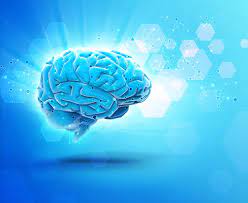The brain is a complex network where electrical signals cause neurotransmitters to be released through pathways of neurons. Neurotransmitters are chemical messengers that facilitate communication within the brain and throughout the nervous system.

Of the many neurotransmitters in our brains, one class called Purines contains ATP (Adenosine Triphosphate) and Adenosine. ATP can be thought of as an energy currency that helps with muscle contraction and transmitting brain signals. The brain consumes more ATP than any other body part and, in this process, creates adenosine as a byproduct. Adenosine’s role in this process is to facilitate the storage and release of energy throughout the body.
In more basic terms, the more physical and mental activity we engage in for longer durations, the more ATP is used, and the more adenosine is built up. The more adenosine we have built up, the stronger our sleep drive. We understand that adenosine builds our sleep drive, so how is adenosine connected to sleep then? Dr. Adavadkar (2023) explains, “Scientists hypothesize that when you stay awake for too long, the accumulating adenosine begins to limit activity in areas of your brain associated with wakefulness, allowing your sleep drive to kick in.” In addition to inhibiting wake-promoting neurons, adenosine also has a sedative effect by promoting the activity of sleep-promoting neurons. This sedative effect helps the brain to get into deeper stages of sleep and allows the brain to recover from daily expenditures. While you sleep, the brain converts adenosine back into ATP, essentially eliminating your sleep drive and helping you to awaken feeling restored.
It is important to understand that caffeine, theophylline (bronchial stimulating medications), and flavonoids (found in alcoholic beverages, soy products, and other foods) can inhibit the effects of adenosine.
Melatonin is another essential chemical involved in the process of sleep. While melatonin and adenosine are both part of our sleep drive, they operate and are influenced by different factors. Melatonin is a hormone produced in the brain as a response to darkness. Melatonin sends a signal to the body to prepare for sleep. Melatonin doesn’t make you sleep; it makes you sleepy.

Melatonin slowly builds as we are exposed to darkness, and then declines as we are exposed to daylight. Melatonin sets what is known as the Circadian Rhythm which is a sleep-wake cycle aligned with the day-night cycle. Our Circadian Rhythm makes us tired at night, and more alert during the day.
It is important to understand that being exposed to bright blue and green daytime-like lights before bed inhibits the effects of melatonin. Melatonin is available as a sleep supplement; however, it is not recommended for long-term use.
If you are experiencing problems falling asleep or staying asleep, the American College of Physicians recommends CBT-I as a first-line approach for insomnia. Jon Ray LMFT, Is certified in CBT-I. Nevada License: 01147, Idaho License: 9791, Utah License: 13934506-3902, or come see one of our many other providers at Nugent Family Counseling Center Inc.

